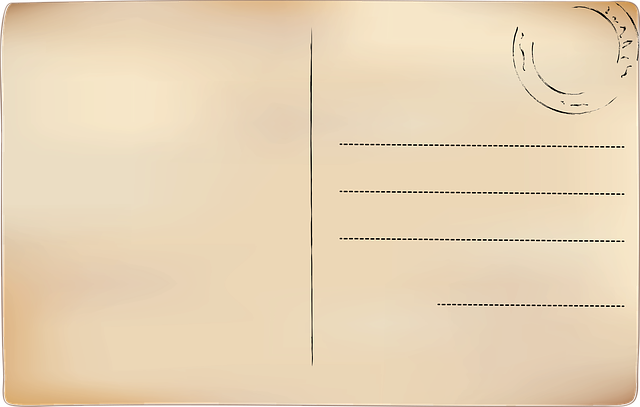
The Origin and History of Postcards
You may have picked up a postcard at a souvenir shop and sent it to a relative or kept it as a memento. Postcards are pieces of paper or cardboard designed to be sent through the mail without envelopes. They're a quick way of sharing an experience with a loved one who wasn't able to be there in person. Postcards were invented in the 19th century. Since the appearance of Instagram and Snapchat, postcards have lost popularity, but collectors still enjoy finding rare postcards and compiling postcard collections.
How Postcards Originated
In 1777, a French engraver created a sheet of cards to be sent among members of the upper classes. This greeting sheet was an antecedent to the postcard, but the fear of servants reading private messages was so intense that the idea didn't catch on. The concept of the individual postcard as we now know it was invented by Dr. Heinrich von Stephan in Prussia in 1865. His idea was rejected at the time, but the first postcard was sent in Austria-Hungary four years later, in 1869. Postcards were a cheap way for soldiers to send messages home to family members from the battlefield during the Franco-Prussian War.
The first postcards didn't have any pictures. One side was for the recipient's address, and the other was for the message. Postcards with pictures appeared in France in 1870, and the first such postcard was sent from Vienna. Over the next decade, the use of postcards spread all over Europe and to the United States.
The Historical Development of Postcards
Postcards were heavily featured at the 1893 World's Fair in Chicago and the 1889 Exposition Universelle to unveil the Eiffel Tower, which only boosted their visibility and use. This was when postcards with photos first began to become popular collectibles.
In 1906, the Sixth Postal Union Congress approved split-side postcards, which had appeared earlier in Britain in 1902. Split-side postcards were designed with a picture on one side, with the back split between the address and the message. More than a billion postcards were mailed annually during the first decade of the 20th century, and sales peaked in 1910.
Postcards have gone through many design changes over the decades. Some of the main types of postcards have included white-border cards, linen cards, and "chrome" cards. White-border cards were created during and after World War I, and they are characterized by a white border around the image, which was done to save ink. Linen cards, printed during the Depression through the end of World War II, were printed on paper with a higher content of cotton fiber and a rougher texture. These cards featured highly saturated colors and included the iconic "Greetings From ..." cards made by Curt Teich. And "chrome" cards, dating from the 1940s and later, are characterized by their glossy texture.
One subset of postcards popular with collectors are maxicards. These collectibles rely on thematic consistency between the image on the card, the image on its postage stamp, and the postmark; the postage and postmark will be placed on the image side of the card, and ideally, all three elements will contain the same or similar imagery. Today, maxicards are collected by both postcard collectors and stamp collectors, and the U.S. Postal Service even intentionally produces these items from time to time to sell to collectors.
In 2005, a postcard-sharing platform called Postcrossing was launched online. The goal is to help people add to their postcard collections by sending cards to other collectors all over the world and receiving cards from others in return. Enthusiasts have prompted postal services to release special Postcrossing stamps, and in 2020, the community celebrated the first World Postcard Day on Oct. 1.
Collecting Postcards
Collecting postcards is called deltiology, which comes from the Greek word for a surface on which something is written. You can find postcards at tourist attractions or in bookstores. If you're looking for vintage postcards, try antique shops or yard sales. It's easiest to start your collection by focusing on a particular theme.
Postcards aren't date-stamped unless they've been mailed, so it can be rather difficult to sort your postcards by date. You can choose postcards by a certain artist, publisher, location, or material. Different evolutionary markers can help you to tell when a postcard was made. For example, if the postcard is 3.5 by 5.5 inches instead of 4 by 6 inches, then it was probably printed before the 1970s. Similarly, if the back is undivided, then you might be looking at a postcard from the late 1800s or early 1900s.
Postcards have historical value because they help us see what life was like at the time the postcard was printed. This is especially true for postcards featuring photographs of cities. We can learn about the means of transportation, common clothing styles, and architecture of the time.
You can store your postcards in albums, envelopes, or boxes with an index system. Albums are best for older postcards because the postcard is less likely to deteriorate if it isn't touched often.
- Timeline of Postcards
- The Smithsonian: Postcards Through History
- Starting a Postcard Collection
- The First Postcard
- Digital Exhibition of Early French Postcards
- Tips for Dating Postcards
- Postal History: Stamped Cards and Postcards
- Determining a Postcard's Age
- Linen Postcards and Exaggerated Depictions of the Great Depression
- The Unique Facets of "Chrome" Postcards
- Postcards From the World's Fairs
- Maximaphily: A Collector's Niche
- Postcard Formats: Maxicards
- Exchanging Postcards by Mail With Postcrossing
- Handling an Inheritance of Postcards
- Assessing the Value of Vintage Postcards
- Preservation of Family History Through Postcards
- Curt Teich: The Immigrant Story Behind "Greetings From ..."
- Why Postcards Are Important
- How to Collect Vintage Postcards
Related Articles:
How Postcards Shaped Travel Marketing (And Why They Still Matter Today)

